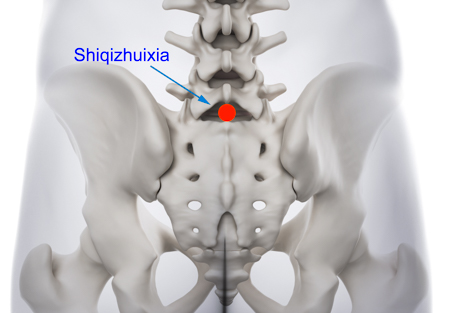
Sample
This course focuses on acupuncture treatments for musculoskeletal related lower back pain. This course primarily limits its scope to lower back pain and sciatica due to invasion of external cold and dampness, kidney qi deficiency, qi and blood stasis, and biomechanical causes including sprains and contusions.
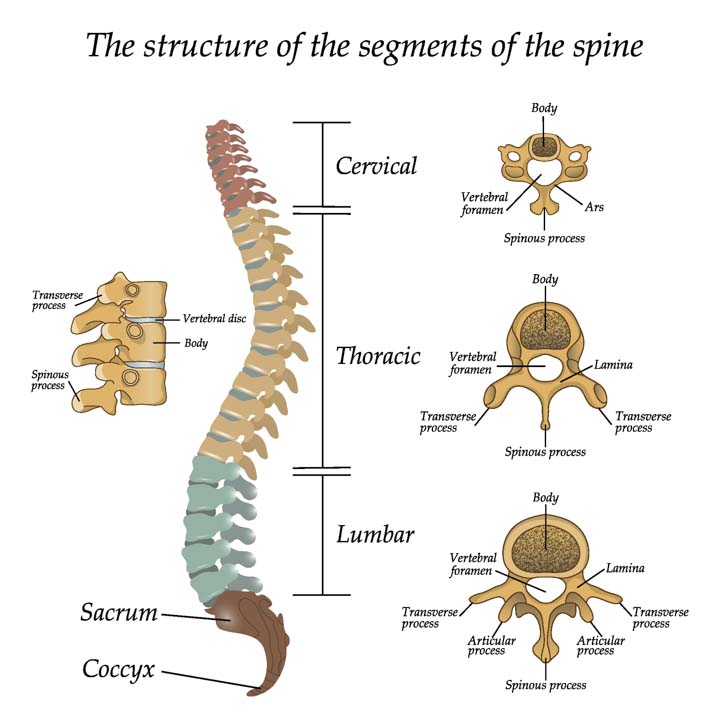
More in course materials…
Sample
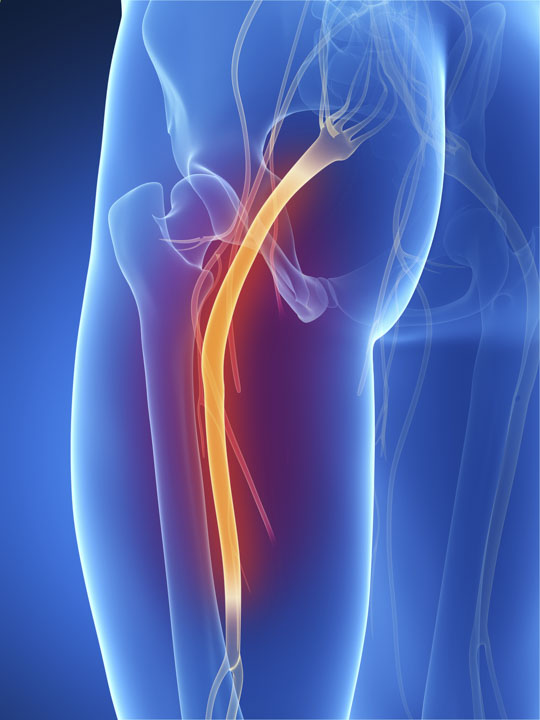 Sciatic Nerve
Sciatic Nerve
The Mayo Clinic website defines sciatica as the following [1]:
Koes et al. note that lumbosacral radicular syndrome, nerve root pain, and nerve root entrapment are often used synonymously with the word sciatica. [2] True sciatica involves radiating symptoms specific to the course of the sciatic nerve. Lumbar radiculopathy may involve radiating pain, numbness, loss of reflexes, and weakness that does not follow the course of the sciatic nerve but instead follows…
More in course materials…
—-
1. mayoclinic.org/diseases-conditions/sciatica/basics/definition/con-20026478. 8-16-2016.
2. Koes BW, Van Tulder MW, Peul WC. Diagnosis and treatment of sciatica. British Medical Journal. 2007 Jun 23;7607:1313.
Sample
According to the National Institute of Neurological Disorders and Stroke (a division of the National Institutes of Health):
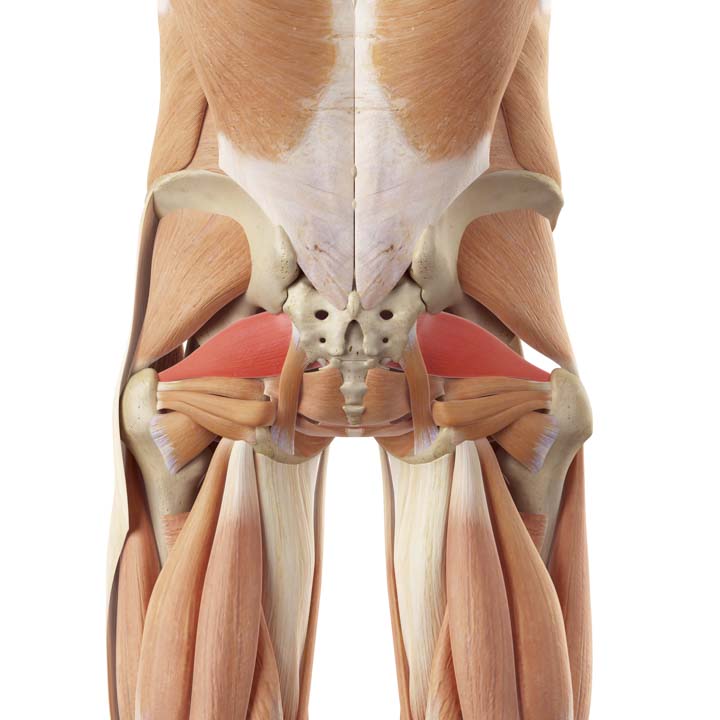
More in course materials…
Sample
Exposure to a cold or damp environment contributes to low back pain. Care must be taken to avoid unwanted exposure including extended periods in the rain, swimming in cold water, or exposure to wind after sweating. The cold contracts and the dampness heavily obstructs thereby leading to channel blockage and consequent pain. Inactivity and excess lying down exacerbates the condition.
Cold-dampness blocking qi and blood circulation causes lower back pain, tingling, or numbness that may radiate to the buttocks, lower limbs, groin, or lower abdomen. Indications include a heavy sensation, stiffness, range on motion impingement, and a cold sensation on the lower back.
The Du (Governing Vessel), Bladder Foot-Taiyang, or Gallbladder Foot-Shaoyang channels are affected. Dampness tends to linger and therefore the pain may become chronic. Pain is exacerbated by cold and damp exposure, which increases qi and blood stasis, and is relieved by warmth. Light exercise or walking may help to warm and dispel dampness thereby relieving pain. Unilateral dull aching and weakness of the lower back and legs indicates excess cold and dampness whereas a bilateral presentation of symptoms may indicate kidney qi deficiency.
Tongue: pale with a greasy, white coating
Pulse: thin, wiry, slow, deep, or moderate
Treatment Principle
Dispel cold and dampness, warm the channels, invigorate qi and blood
Acupuncture Points
Moxibustion as a standalone therapy or attached to the needles is appropriate to dispel cold and dampness.
More in course materials…
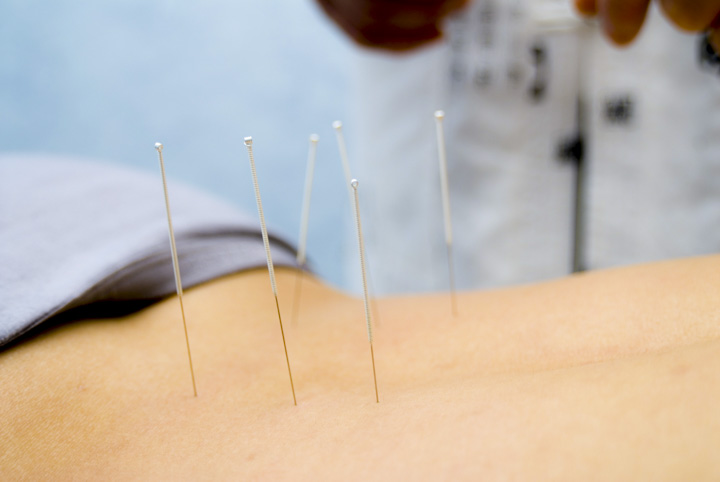 Bladder channel acupoints of the lower back
Bladder channel acupoints of the lower back
Sample
Acute lower back pain is a common condition that may be treated by a variety of approaches with acupuncture. A time honored favorite is the use of Yaotongxue, translated as lumbar pain point. Alternately, this point is referred to as Yaotongdian, translated as lumbar pain spot. Numerically, N-UE-19a is assigned to the Yaotongxue point between the second and third metacarpal bones and N-UE-19c is assigned to the Yaotongxue point between the fourth and fifth metacarpal bones.
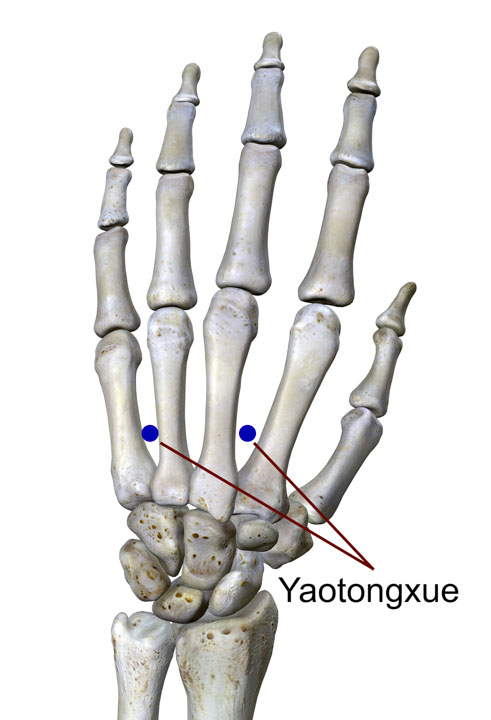
There is an additional Yaotong (lower back pain) point, N-UE-19b. It may be used to treat lower back pain and pain resulting from injury to the chest or extremities. It is located between the third and fourth metacarpal bones. The Yaotongxue points between the second and third and the fourth and fifth metacarpal bones are more common in clinical practice. Here, the focus is on the use of points (N-UE-19a, N-UE-19c) as a paired set.
Location
Yaotongxue (N-UE-19a, N-UE-19c) is a paired set points located on the dorsum of the hand. Both points are midway between the transverse crease of the wrist and the metacarpophalangeal joint. One point is located between the second and third metacarpal bones and may be referred to as Yaotong #1. The other is located between the fourth and fifth metacarpal bones and may be referred to as Yaotong #3. Yaotongxue points are in the depressions distal to the base of the metacarpals.
Indications
Yaotongxue points are indicated for the treatment of acute lumbar sprain. Yaotong #1 is indicated for pain due to injury to the head, lower back, and extremities. Yaotong #3 is indicated for pain due to injury to the lower back and extremities.
Clinical Notes
Needling Yaotongxue invigorates the qi and blood in the lumbar region. Needling may be applied perpendicularly or obliquely (45º) towards the direction of the wrist. Oblique insertion is the preferred method. Depth of insertion is 0.5” – 1.5”.
 Round Tip Probe
Round Tip Probe
Perhaps one of the best ways to determine whether or not Yaotongxue will benefit the patient is through palpation using a stainless steel ball-shaped tip probe. Press the round head of the probe into the Yaotongxue points on both hands with moderate, steady pressure. If probing one of the points evokes an unusually painful response, it is active and may yield the best results. If no point evokes a sensitive response, needling Yaotongxue may or may not achieve clinical results. Yaotongxue is often applied with the patient in the seated position. The seated position is the preferred position because patients are often asked…
More in course materials…
Sample
Baohuang (BL53) is translated as bladder’s vitals. This point is 3 cun lateral to the midline (GV channel) and is level with the 2nd sacral foramen (palpate to find the 2nd sacral foramen). An alternate method to locate this acupoint is to firmly press on the lateral edge of the buttocks and locate the point halfway between the midline and the lateral edge of the buttocks (level with the 2nd sacral foramen). This acupoint benefits urinary system, the lumbar region, and is effective for the treatment of lower back pain, sciatica, and associated radiculopathies.
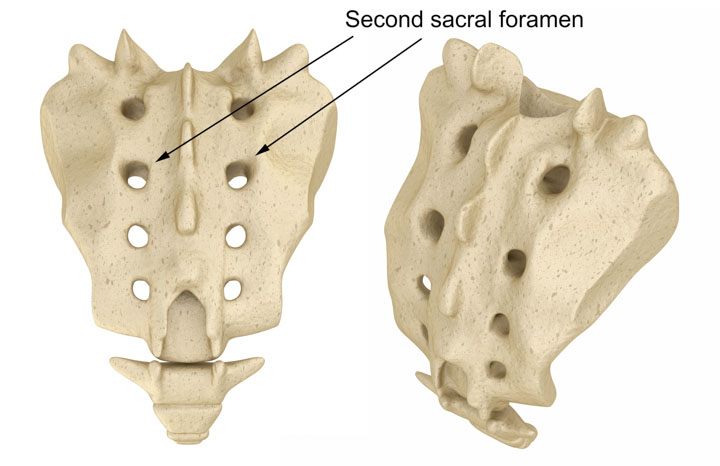
Triple Acupuncture
Triple acupuncture is often applied to BL53, Yaoyan, or GB30 to enhance manual acupuncture effectiveness. The first needle is inserted to a moderate depth at the acupoint location. The second and third needle are inserted approximately 1 cun laterally and medially to the acupoint and angled slightly toward the acupoint. The second and third needle are inserted more deeply than the first needle, which was applied directly to the acupoint site. The moderate depth at the acupoint provides peaceful stimulation and the greater depth at the medial and lateral areas provides a stronger, supportive stimulation.
Crossing Midline Electroacupuncture
For patients with lumbar disc protrusions causing radiculopathy (distally radiating pain, weakness, numbness), electroacupuncture may be applied through the disc region to the area of perceived pain or numbness. For example, if a disc protrusion at L5/S1 causes radiating pain to the right buttocks region, apply one electroacupuncture alligator clip to the left BL25 acupoint and another to the right BL53, GB30, or Yaoyan acupoint. If the radiculopathy radiates even further (e.g., to the right side legs or feet), one may choose to connect electroacupuncture between the left BL25 acupoint and the right sided BL60 (Kunlun) or KD3 (Taixi) acupoint.
Most research suggests that electroacupuncture intensity levels may be set to patient tolerance levels. As for specific frequency settings, research conclusions vary. The research section towards the latter part of this course lists specific settings for specific acupuncture point prescriptions. A review published in Anesthesiology – The Journal of the American Society of Anesthesiologists concludes that electro-acupuncture is more effective at the 2 – 10 Hz setting than the 100 Hz setting for the relief of inflammation and neuropathic pain. The investigators note that electro-acupuncture “blocks pain by activating a variety of bioactive chemicals through peripheral, spinal, and supraspinal mechanisms.” [1] Caution: crossing the midline is not appropriate in areas near the heart. This example covers the lower back region only.
In this example, BL25 was selected because it is level with the lower border of the spinous process of the 4th lumbar vertebra. The disc protrusion is located on the next level down, at the L5 level. As a result, the current from the electroacupuncture passes from the L4 region through the L5 disc region and then to the distal acupoint in the buttocks or leg where the radicular pain or numbness resides. The following illustration shows how the current passes through the disc region:
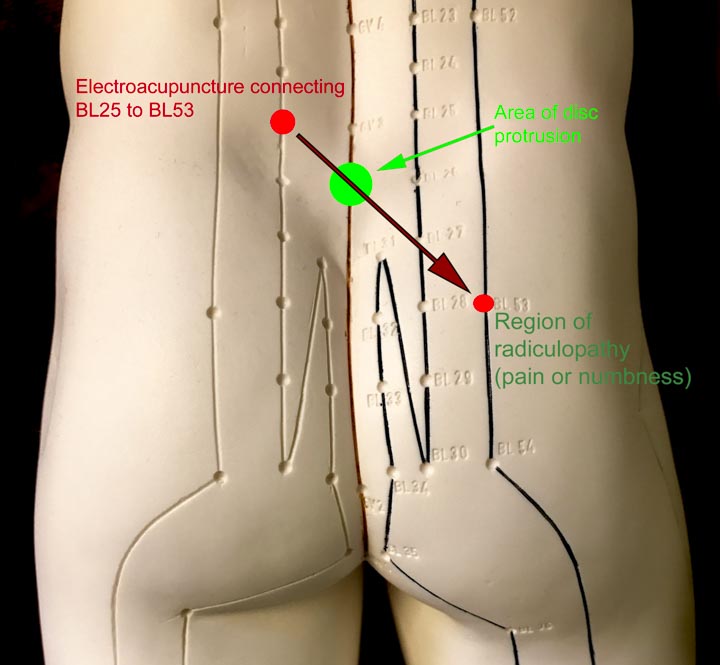 Example of L5/S1 region receiving electroacupuncture stimulation
Example of L5/S1 region receiving electroacupuncture stimulation
More in course materials…
—-
1. Zhang, Ruixin, Ph.D.; Lixing Lao, Ph.D.; Ke Ren, Ph.D.; and Brian M. Berman, MD. “Mechanisms of Acupuncture–Electroacupuncture on Persistent Pain.” Anesthesiology 120, no. 2 (2014): 482-503.
Sample
Qi-guiding acupuncture relieves disc herniation pain and a special intensive silver acupuncture needle protocol relieves chronic lower back myofascial pain.
Researchers find acupuncture effective for the treatment of lower back pain disorders. In a protocolized study from the Shanghai Jiaotong University Sixth People’s Hospital, researchers determined that a special type of manual acupuncture therapy, known as qi-guiding acupuncture, produces significant positive patient outcomes for lumbar intervertebral disc herniation patients. In related research from Xinping Hospital of Traditional Chinese Medicine, investigators find acupuncture combined with moxibustion effective for the alleviation of lower back pain due to lumbodorsal myofascial pain syndrome. A special application of silver acupuncture needles produced superior patient outcomes. Let’s start with a look at the Shanghai Jiaotang University research and then we’ll see how the silver needle protocol boosts treatment efficacy for the treatment of lower back pain.
Acupuncture is effective for the treatment of lumbar intervertebral disc herniations. Wu et al. (Shanghai Jiaotong University Sixth People’s Hospital) investigated the treatment results of qi-guiding acupuncture with meridian differentiated acupoint selections and determined that it produces significant positive treatment outcomes for lumbar intervertebral disc herniation patients. Wu et al. also find electroacupuncture with meridian differentiated acupoint selections effective; however, qi-guiding acupuncture had a slightly higher rate of producing positive patient outcomes. Qi-guiding acupuncture had an 87.5% total treatment effective rate and electroacupuncture achieved an 86.6% total treatment effective rate. Qi-guiding acupuncture also had better outcomes for increases in nerve conduction velocity. The results are definitive given the large sample size of 549 patients with lumbar disc herniations evaluated in this study.
Lumbar disc herniation patients experience lower back pain and radiculopathy (radiating pain and numbness) as a result of anulus fibrosis damage, IVF encroachment, and other issues associated with disc damage (Hu et al.). Acupuncture, as one of the most common non-surgical treatment methods for lumbar disc herniation, has a high treatment effective rate and no significant adverse effects (Cheng).
Qi-guiding acupuncture was first documented in ancient literature, including The Systematic Classic of Acupuncture & Moxibustion by Huang-fu Mi. In qi-guiding acupuncture, needle entry and removal is controlled and slow. To direct qi upward, the acupuncture needle is oriented upward; similarly, to direct qi downward, the needle is pointed downward. Subsequently, the needle is frequently rotated, lifted, and thrust to regulate the flow of qi in the body. Additional manipulation techniques may be intermittently applied. In modern use, qi-guiding acupuncture repairs ultramicroscopic structures of damaged nerve roots and accelerates other aspects of nerve repair, thereby increasing nerve conduction.
In this study, lumbar disc herniation patients receiving qi-guiding acupuncture achieved an 87.5% total treatment effective rate. Patients receiving electroacupuncture achieved an 86.6% total treatment effective rate. Both qi-guiding acupuncture and electroacupuncture significantly increased nerve conduction velocity. Qi-guiding acupuncture had a slightly greater improvement in common peroneal nerve conduction velocity and superficial fibular nerve conduction velocity. Common peroneal nerve conduction velocity increased from 38.26 (± 12.8) to 44.75 (± 5.24) after the application of qi-guiding acupuncture, and increased from 39.11 (± 3.64) to 39.86 (± 10.95) after electroacupuncture. Superficial fibular nerve conduction velocity increased from 41.63 (± 4.37) to 42.55 (± 6.43) after the application of qi-guiding acupuncture, and increased from 40.71 (± 9.56) to 40.43 (± 4.01) after electroacupuncture.
A total of 549 patients with lumbar disc herniations were treated and evaluated in this study. These patients were diagnosed with lumbar disc herniations between December 2012 and March 2014. They were randomly divided into a treatment group and a control group, with 280 patients in the treatment group and 269 patients in the control group. The treatment group underwent qi-guiding acupuncture therapy, while the control group received electroacupuncture. Acupoint selection for both groups was based on meridian differentiation. Identical acupoints were selected for both patient groups.
For Taiyang meridian lumbago and leg pain (scelalgia):
For Yangming meridian lumbago and leg pain:
For Shaoyang meridian lumbago and leg pain…
More research available in course materials…